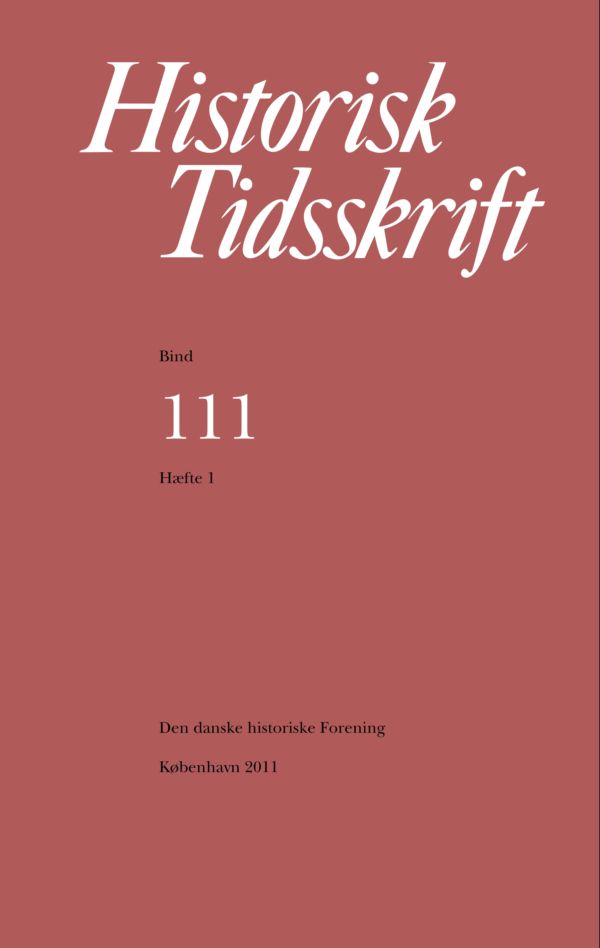Omorganiseringen af den teologiske censur Generalkirkeinspektionskollegiets censurvirksomhed 1737-1747
Resumé
Reorganization of Theological Censorship The Department of General Ecclesiastical Supervision 1737-1347The subject of this article is theological censorship by the Department of General Ecclesiastical Supervision [Generalkirkeinspektionskollegium, GKIK] in absolutist Denmark from 1737 through 1747. During this period, not only did the Faculty of Theology at the University of Copenhagen censor religious manu scripts meant to appear in print – on principle every single one of them – but the results of this procedure were subsequently reviewed by the newly established GKIK, a state authority which answered directly to the King. Manuscripts containing religious dispute and controversy were subject to the direct censorship of the GKIK, with the exception of academic theses from the University. The fact that they were in Latin, rendered them harmless with regard to the public. The present study is based on hitherto unexploited source material in the GKIK archives. It concludes that even though the censuring of religious manuscripts was an important matter in the eyes of secular and ecclesiastical officials, many uncensored books were printed and circulated. The authorities were well aware of this fact. They emphasized – and stipulated by law – the obligation of printer-publishers to have their books censored before sending them to press. However, the authorities did not take any action to enforce these laws, meaning that in practice they tolerated the existence of uncensored books. The State did not normally consider uncensored books a threat. Printers had an economic incentive not to print uncensored books if they suspected them to be unacceptable. If they crossed the boundary, printers could incur heavy losses through confiscation of the printed books or loss of state-granted monopolies or other lucrative jobs. Furthermore, the authorities did not regard all readers as potential troublemakers. Individuals of learning were no threat to Church or State and could freely possess and read books prohibited for unstudied laypeople. For Christian VI, the Danish monarch, it was more important to replace Lutheran Orthodoxy with Pietism as the official and prevailing theology of the Danish Church than it was to control uncensored books. By a thorough reorganization, including even other measures besides the GKIK, religious censorship came to serve as a tool to achieve that goal. Pietistic theologians gained more power within the institution. Orthodox Lutherans among the university professors who served as primary censors were not expelled from the service – this might have caused a legitimacy crisis – but their influence was diluted by augmenting the number of professors taking turns at the task. Furthermore, the still active orthodox censors were held in check by the GKIK. Overall, the main function of the religious censorship in the analyzed period was to make sure Pietistic books were bestowed with the official sign of approval, thus signaling that Pietism was now the official theology of the Danish Church.Downloads
Publiceret
Citation/Eksport
Nummer
Sektion
Licens
Ophavsret til bidrag i Historisk Tidsskrift tilhører forfatterne og Den danske historiske Forening som udgiver af Historisk Tidsskrift. For illustrationer gælder den ophavsret, som står anført i billedteksten. Ophavsretslovens almindelige bestemmelser gælder, hvilket vil sige, at ophavsretten gælder i 70 år efter forfatterens død. Bidrag i Historisk Tidsskrift må derfor, med forbehold for en ”moving wall” på tre år, frit downloades, læses, gemmes, anvendes og citeres (med kildeangivelse) i privat og videnskabelig sammenhæng, men de må ikke helt eller delvis genudgives af tredjepart, heller ikke i redigeret form, uden tilladelse fra forfatterne og Den danske historiske Forening. Henvendelse skal i så fald rettes til Historisk Tidsskrifts redaktion på histtid@hum.ku.dk.





